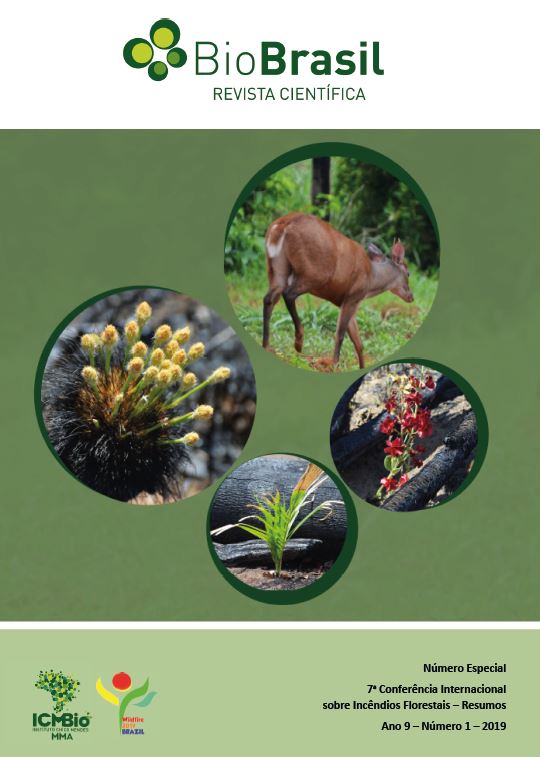Modelling for Integrated Fire Management
DOI:
https://doi.org/10.37002/biodiversidadebrasileira.v9i1.1087Keywords:
fire model, climate change, areas burntAbstract
Integrated Fire Management assumes predictive tools which enable spatial and temporal location of possible wildfires in accordance with climate conditions, socio-demographic situation and vegetation structure. Such predictive tool was suggested recently for a global scale. The model SEVER-FIRE consists from four parts: 1) estimate of fire danger risk based on Nesterov Index applied by Russian Forest Service; 2) estimate of potential number of lightning and human ignitions; 3) estimate of spread of fire and 4) estimate of fire duration due to rain termination or fire suppression. Model operates at daily time step with spatial resolution 10 by 10 km. Model is validated using historic fire statistics (for numbers of lightning against human fires) and remote sensing data (for areas burnt). Model was used to predict future dynamics of areas burnt under four anthropogenic greenhouse emissions scenario providing different climate and socio-economic conditions. It was shown that future areas burnt may decrease, stay almost unchanged or increase to the end of this century according to greenhouse emissions scenarios.Â
Downloads
Downloads
Published
Issue
Section
License
Copyright (c) 2021 Biodiversidade Brasileira - BioBrasil

This work is licensed under a Creative Commons Attribution-NonCommercial-NoDerivatives 4.0 International License.
Os artigos estão licenciados sob uma licença Creative Commons Atribuição-NãoComercial-SemDerivações 4.0 Internacional (CC BY-NC-ND 4.0). O acesso é livre e gratuito para download e leitura, ou seja, é permitido copiar e redistribuir o material em qualquer mídia ou formato.











